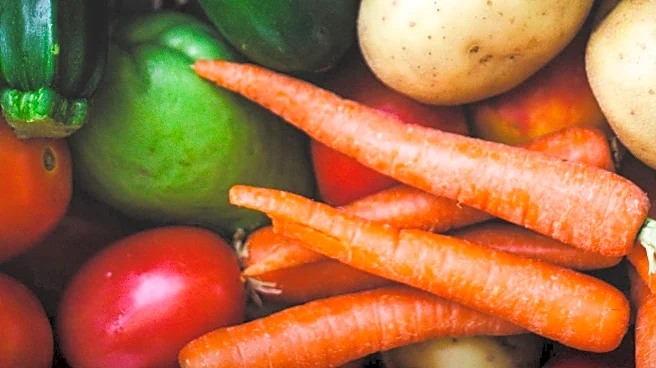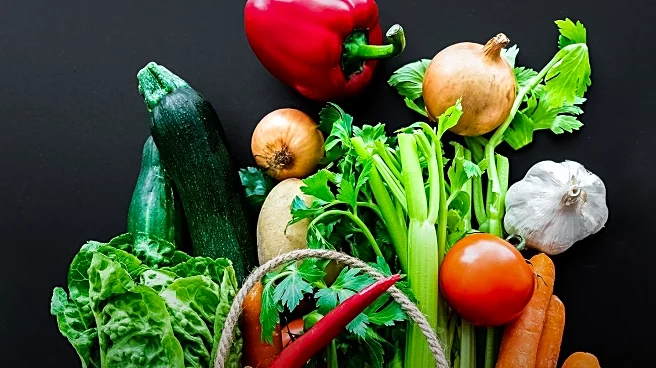What is the story about?
What's Happening?
In Australia, the arrival of spring has led to a decrease in prices for various fruits and vegetables, providing consumers with more affordable options. Strawberries are now available for $3 per punnet, and cauliflower is priced at $2.50 per head. Hass avocados are also recommended for spring menus, with prices at $1.50 each. The supply of strawberries from Queensland and Western Australia has contributed to the price drop, while mangoes from the Northern Territory are being sold at two for $10. Other vegetables like broccoli, spinach, and brussels sprouts are in season, with prices significantly lower than previous months. The abundance of green beans and leafy greens further enhances the variety available to consumers.
Why It's Important?
The reduction in fruit and vegetable prices is significant for consumers, especially during a time when economic pressures are prevalent. Lower prices allow for more accessible healthy eating options, which can positively impact public health. Additionally, the affordability of these produce items may encourage increased consumption, supporting local farmers and the agricultural industry. The seasonal availability of these products also highlights the importance of sustainable farming practices and the benefits of local sourcing, which can reduce transportation costs and environmental impact.
What's Next?
As the season progresses, consumers can expect further reductions in prices for other fruits and vegetables, such as blueberries and asparagus. The overlap in growing areas for strawberries is likely to continue driving prices down, while the upcoming mango season in Queensland may lead to even lower prices. Retailers and farmers will need to adapt to changing supply dynamics and consumer demand, potentially influencing future pricing strategies and marketing efforts.
Beyond the Headlines
The shift in seasonal produce availability underscores the importance of understanding agricultural cycles and their impact on food prices. It also highlights the role of climate and weather patterns in determining crop yields and market supply. Consumers may become more aware of the benefits of purchasing in-season produce, which can lead to more sustainable consumption habits and support for local economies.
AI Generated Content
Do you find this article useful?















